The ultimate example of ripened fruit is the banana, but in recent years, the supply of ready-to-eat fruit has increased. Mangoes and avocados are two of the most important exotics that are offered ripened most often. Roughly 15 years ago, no one had heard of ripened exotics. Have we mastered ripening? Hirich Khalaf, ripener for Nature’s Pride, and Jan Willem Verloop, marketing manager, talk about their experience in ripening exotics and the challenges still ahead of the sector.
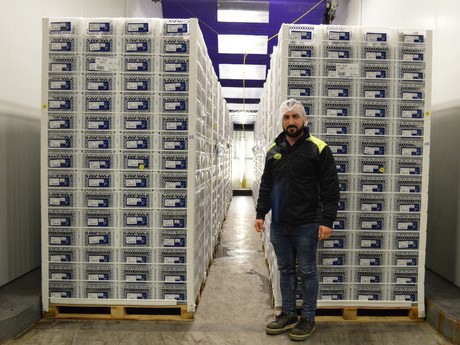
In 2005, Nature’s Pride was the first European company that started ripening fruit. “That was exotic. We experimented with the ripening process,” says Jan Willem. The boxes of avocados were put in front of the heater, as it were, to find out how fruit ripens. “At first we were only familiar with the ripening process of bananas. We copied that,” Hirich remembers. As the ripeners became more familiar with the products, the process was adjusted. “I laugh about the way we worked ten years ago,” the ripener admits. However, these years were essential for experimenting, testing and gaining experience. Thirteen years later, about four million avocados and one million mangoes leave the 50 ripening chambers of Nature’s Pride in Maasdijk, the Netherlands, for consumers throughout Europe.
Dry matter and brix level
“Our ripening process is very advanced, but there are major differences between developed and less developed regions and growers,” Hirich says. He has 11 years of experience in ripening exotics. “When a product arrives in a good state, we have a good basis to work with. But if a product has been picked or packed wrong, we can’t ripen the product properly. That’s why we carefully select the growers we work with.” This also illustrates the complexity of ripening. It’s not just about what happens in the ripening chamber, it starts much earlier than that, at the source.
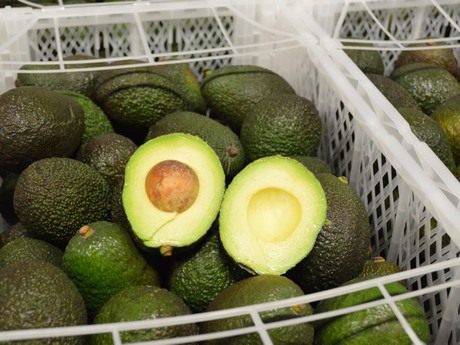
The most popular exotics that are ripened are mango and avocado. For mangoes, the brix level of the fruit is more important for the result of the ripening process. For avocados, the dry matter is important. “When a mango has a brix level that’s too low, the fruit might become soft but the flavour won’t be right,” Hirich mentions the importance of this value. For avocados, the dry matter has to be at a good level, otherwise the flavour won’t be as good. “In the end, consumers care about flavour,” he emphasises. “Anyone can soften a product, but that doesn’t mean it’ll be ripened.”
Adapting the process to origin
The number of factors to be considered in the ripening process is practically infinite and can be summarised in four terms: origin, time in the season, packaging and variety. A lot of factors play parts within these terms. “Looking just at mangoes, there are more than 1,000 varieties globally,” Hirich explains. “Of the mangoes we sell, 80 to 85 per cent is Keitt or Kent.” India is the homeland of the mango , yet that country plays a small part on the global market. “Quality of those mangoes isn’t good enough for export.” Peru, Israel, Spain, Brazil, Ivory Coast and the Dominican Republic are some of the countries that can export mangoes.
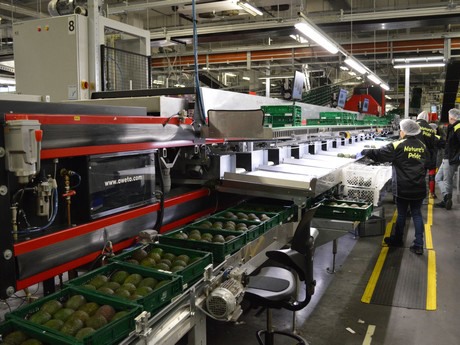
Besides variety, the region, and even the plot of origin is important. “The moment of pollination is always different, the field manager has to keep track of that,” Hirich says. Within the production region, the harvest shifts among the various plots. For each plot, the ripening process has to be adjusted slightly. “There are often a few weeks of difference between the harvest of the various plots, and the fruit will have different characteristics.” When the harvest shifts towards a different region or country of origin, the characteristics of the fruit also change. These moments of shifting are the times when it becomes very important for the ripeners to keep an eye on the fruit. “We adjust the process per production region or even per production field.”
Crates instead of boxes
The harvest of about one hectare can fit into one container. From that moment, the fruit hangs around together. Upon arrival in Maasdijk, the fruit is placed in one ripening chamber. The conditions of the fruit and the atmosphere in the reefers are always different. That’s why Hirich keeps batches strictly separated. The circumstances in the container are of influence on the ripening process. “We keep it small, 20 to 24 pallets per chamber,” he explains.
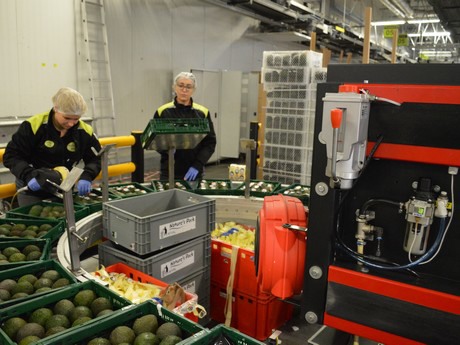
The packaging is mostly of influence on the air circulation in the ripening chamber. For avocados, Nature’s Pride switched to crates for ten kilos of avocados. The open crates guarantee a better air circulation. Additional advantage: 3,000 more kilos can fit into a container compared to when the avocados are placed in boxes. For mangoes, they’re still looking into the best option. The skin of the fruit is more sensitive, so that a standard crate isn’t an option. Hirich explains that ripening chambers with multiple layers, as are used for bananas, aren’t an option either, because the ripening process is determined by a lot of factors.
Sorting after ripening
Because of all of these factors, the ripening process tends to last between four and seven days. “It’s often said that ripening takes five days, but you need an additional ripening day particularly at the start of the season,” Hirich continues. The ingredients of the ripening process are temperature, atmospheric humidity, air circulation and ethylene. Ethylene is only used on the first day of ripening avocados. Ripening avocados emit ethylene, but not all avocados emit the same amount. To equalise the level in the entire chamber, additional ethylene is added. “We don’t use ethylene to speed up the process,” the ripener emphasises. No ethylene is used in the ripening of mangoes.
The temperature is dropped to 20 degrees Celsius on the first day. In the following days, the temperature is gradually dropped to the ideal storage temperature. “That’s better for the product’s shelf life,” Jan Willem adds. After the days in the ripening chamber, the fruit is sorted. “All the fruit traverses our Aweta sorting lines, where it can be checked for external and internal quality,” he continues. “We have to supply a good product to our customers.” Depending on the reason for rejection, the rejected avocados and mangoes are returned to the ripening chamber, to industry for processing, to the food bank or, in the worst case, to the bio-fermenter.
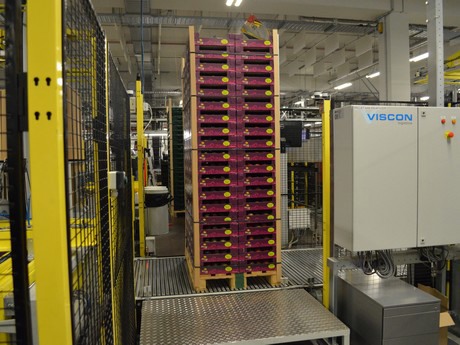
Ripeness guiding in sales
The quality of the ripened fruit is essential to let the market grow. Avocado is consumed in just 30 per cent of the Dutch households. The market is growing, in part because avocado is seen as a vegetable instead of a fruit more often. “When new customers have a negative experience, we’ll lose them,” Jan Willem emphasises the importance of quality. He also points out that Dutch avocado consumers buy an average of 11 avocados per year.
In 2005, Nature’s Pride marketed the first ready-to-eat fruit. Other parties in the sector soon followed. “For recognisability, we started using the EAT ME label,” Jan Willem says. “We think we’re better at ripening than others, to us, ripening is truly the core of the company.” Sales and ripening have been tuned to each other within Nature’s Pride. Orders for ripened batches have to be at the ripener at least a week before delivery. “Everything is planned as much as possible,” Hirich says. “Naturally there’s a bit of a leeway, and we’re flexible, but the quality and ripeness of the fruit are guiding to us.” Jan Willem adds: “The sales department keeps that in mind as well. In June, for example, large volumes of avocados are available, so we can have promotions then. That follows the peak in production.”
More information:
Nature's Pride
Hirich Khalaf
[email protected]
www.naturespride.nl
